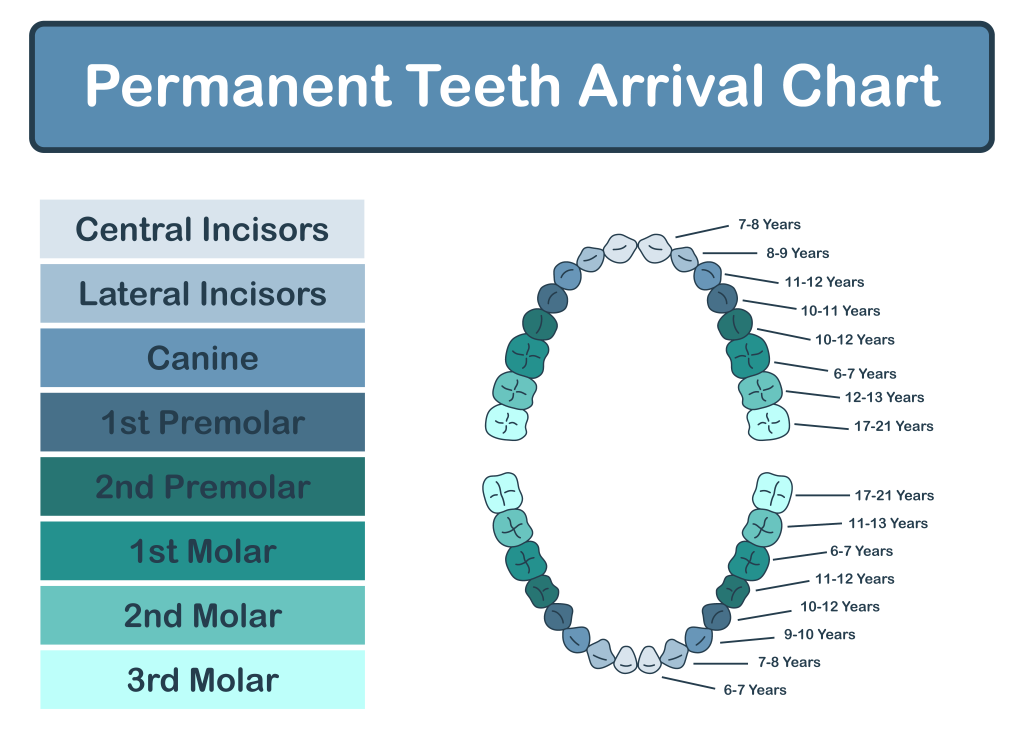Middle Childhood
How can I know whether my child’s teeth are growing in a normal pattern?
Permanent teeth will begin to erupt at about five or six years of age. Some permanent teeth will replace the position of baby teeth and others, such as the molars, will grow in position previously unoccupied. This stage of having both primary and permanent teeth is referred to as the “mixed dentition stage” and usually continues till around twelve to fourteen years of age.
Below, you will find links to eruption charts, which will help give you some idea as to when these teeth appear. By attending regular check-up appointments with a certified pediatric dentist like Dr. Ruelf, parents can provide their children with the best assurance that their teeth are undergoing normal and healthy development.

Fluoride Treatments
Fluoride has been demonstrated to be safe and highly effective. Its role in the prevention of tooth decay is in remineralizing and physically hardening the outer enamel layer of the tooth. Fluoride treatments provided within the pediatric dental office are of a higher concentration than what is found in toothpaste or rinses. Periodic and professionally applied fluoride treatment can reduce the incidence of caries in children.
Sealants
While not all molars present with such deep and narrow crevices, those that do often stand to benefit from the placement of a protective material referred to as dental sealant.
Pit & Fissure Caries
The common presence of deep and narrow pits and fissures on the surfaces of children’s teeth often creates niches where food, debris, and cavity-forming bacteria bind and cannot be easily removed with at-home brushing.
Persistent Tongue Thrust
Tongue thrusting is part of the normal swallowing pattern for an infant in which the tongue is placed against the teeth in the front of the mouth. Generally, between the ages of eight and twelve, children will outgrow this swallowing pattern and develop a swallowing pattern characteristic to adults. A persistent tongue thrust that exceeds the normal transition period can contribute to a deformity in the child’s bite. Unfortunately, parent’s are often completely unaware that this problem exists.
Pediatric dentists are trained to detect persistent tongue thrusting. Correction may involve teaching the patient how to swallow through a variety of exercises, myofunctional therapy or the placement of appliances to deter the behavior.
Space Loss
Around the ages of five and six, children’s primary teeth are shed while permanent teeth begin to fill the space they left behind. Early tooth loss or prolonged retention of the primary teeth must be routinely monitored to ensure adequate spacing exists for the developing permanent teeth.

